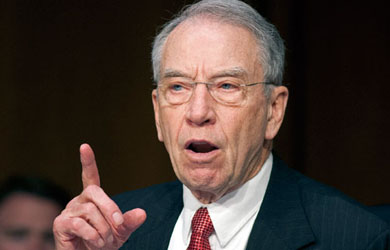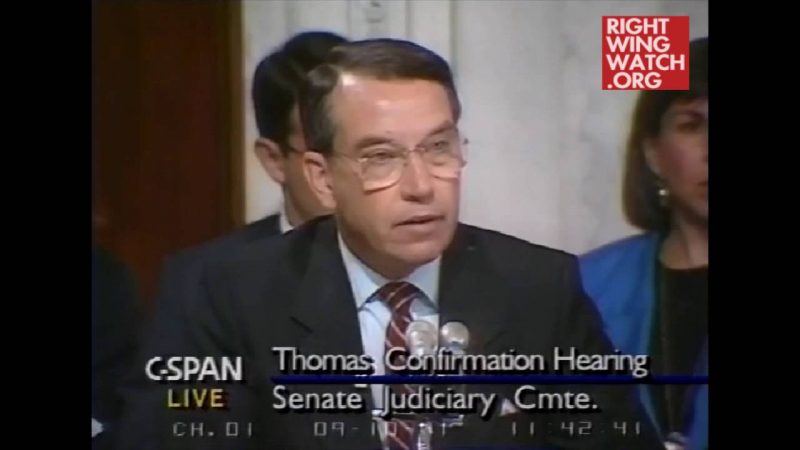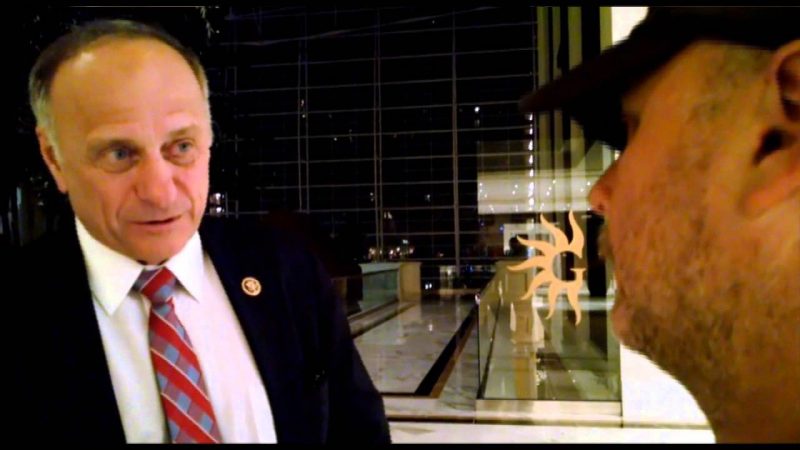With Election Day just four months away, Judiciary Committee Chairman Chuck Grassley finds himself in a statistical tie in the race to keep his Iowa Senate seat, leading his opponent, former Iowa Lt. Gov. Patty Judge, by only a single percentage point.
For 30 years, Grassley has never had an electoral challenger come within 30 percentage points of defeating him. This year is different because Iowa voters believe Grassley has changed.
A perusal of his Senate record clearly demonstrates that Grassley is no longer the senator who Iowa voters returned to Washington five times. While he is now leading the politically motivated effort to block the nomination of Judge Merrick Garland to the Supreme Court, for much of his career, Grassley used the confirmation processes as an opportunity to call for his colleagues to look to their bigger selves and the country.
His philosophy was clearly laid out after President George H.W. Bush appointed Clarence Thomas to the nation’s highest court in 1991. Grassley took to the Senate floor a little more than a week after the nomination, telling his colleagues:
While the Constitution gives the President the principle role in selecting judges for the Federal courts, including the Supreme Court, our role is to ensure that the candidates have the intellect, integrity, and temperament to serve in that high capacity particularly the high capacity of the Supreme Court. No, we are not here to be a rubber stamp for the President’s nominations, but our inquiry should be focused on the nominee’s objective qualifications.
Today, Grassley’s arguments against even holding hearings on Garland’s confirmation have nothing to do with the “nominee’s objective qualifications,” but instead are purely political.
As Thomas’ hearings began, Grassley even complained that the Senate’s process for examining a lifetime appointee had grown too burdensome:
In response to the Committee’s request for certain documents, Judge Thomas has provided, I have been told, some 36,000 pages of documents, and I understand that it has been cataloged in some 10 boxes of documents. . . . This document request is just an example of how far the Senate has strayed in the nomination process.
He also questioned the length of the process:
When Justice White was nominated, just 29 years ago, he came to this Judiciary Committee and was asked only eight questions. What has changed to require all these long hearings over the last quarter century? Well, something has lengthened the process, and to some extent I feel it has been lengthened needlessly.
In 1991, when Grassley complained about the process being “lengthened needlessly,” it took the Senate 99 days to confirm Thomas. Garland was nominated 117 days ago.
As the Thomas nomination reached the Senate floor, Grassley attempted to persuade his colleagues that the process of confirming judges could advance a higher American ideal:
It has been asserted that this, too, was part of our democratic system. But I hope that there is a way to restore ourselves and the American people the ideals of representative democracy, ideals that brought down the Berlin Wall, that inspired the student revolt in Tiananmen Square, and that sustained Boris Yeltsin in his standoff with the coup plotters.
I believe we can do it, that we must do it, and I urge my colleagues to confirm Judge Thomas as one step in that direction.
Today, Grassley is engaging in an absurd level of obstruction and abandoning long-held principles, serving only to sow chaos in the Senate, and certainly not living up to the “ideals of representative democracy.”
Of course, there are numerous factors dragging down Grassley’s poll numbers — most notably President Obama’s popularity in Iowa and Donald Trump’s place at the top of the GOP ticket. But Grassley faces not only an electorate in which 64 percent support hearings for Garland, but also voters who do not recognize the man they have sent to the Senate for four decades.






